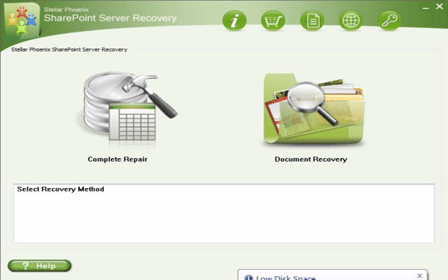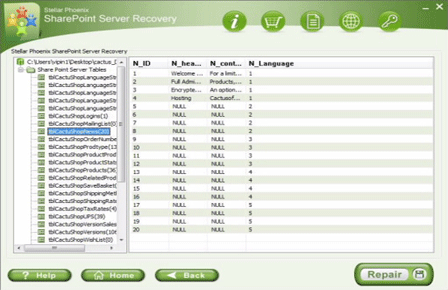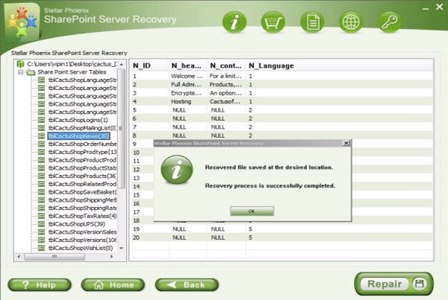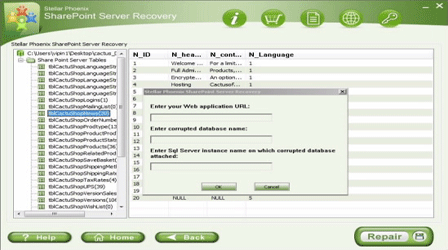Choose a disaster recovery strategy for SharePoint 2013- SharePoint Recovery Method
Published by Jacob Martin on May 8, 2015
It is necessary to make an effective SharePoint disaster recovery strategy , this will protect your important data and other component of your SharePoint from any types of disaster and other difficult situations. A successful disaster recovery plan for a SharePoint 2013 farm must be ample to meet your organization’s business necessities, which are usually articulated by using two measures: Recovery Time Objective (RTO) and Recovery Point Objective (RPO). These two requirements i.e. RTO and RPO are consequent by formative the downtime cost to the association if a disaster occurs.
In most cases, SharePoint products are one of several applications that must be restorable in the occasion of a data center shutdown or disaster. So that this article is not on the disaster recovery planning but focus on options for making sure that you can restore your SharePoint 2013 farm at another location.
Despite of the kind and level of a disaster, SharePoint recovery includes the use of a standby data center so one can recover the farm.
Standby data center recovery options
Standby data centers are need for situations where limited redundant systems and backups cannot restore from the outage at the main data center. The time and instant attempt to get a substitute farm up and executing in a dissimilar location is frequently known as a hot, warm, or cold standby.
- Cold standby. It is the secondary data center which can provide accessibility within hours or days.
- Warm standby. This secondary data center provides data accessibility within minutes or hours.
- Hot standby. This secondary data center able to give accessibility within seconds or minutes
These standby data centers have precise characteristics and requirements, and also a linked cost to operate and preserve.
- Cold standby disaster recovery strategy: It is a business ships, backup to hold bare metal recovery to local offsite storage space frequently, and has agreements in place for crisis server fees in another region.
Pros:
- Used the cheapest feature to preserve, operationally.
- It is a luxurious option to recover, because in this method physical servers be configured properly after the occurrence of any disaster.
Cons: It is the sluggish way to recover.
- Warm standby disaster recovery strategy: A business ships backups or virtual system images to local and regional disaster recovery farms.
Pros: It is quite inexpensive to recover.
Cons: it can take more time to maintain.
- Hot standby disaster recovery strategy: This is a business that runs numerous data centers, but serves content and services throughout only one data center.
Pros: Very fast to recover.
Cons: It is very expensive to organize and maintain.
SharePoint Data Recovery Tool
 |
 |
 |
If you are facing any SharePoint error and corruption then you can restore your inaccessible data without need of any backup, use SharePoint data recovery tool and make your data accessible. This tool is able to deal with any SharePoint Error with ease, through this one can easily make their SharePoint database error free. This automatic method is also recommended by many professionals.
how to recover SharePoint 2013 data
- Firstly launch the SharePoint Recovery Tool you would find an interface. This interface screen displays two options to recover SharePoint data: ‘Complete Repair’ and ‘Document Recovery’ Select as per your requirement.

- If you choose ‘Complete Repair’, the screen will show the options for selecting and searching SQL Server (.MDF) files. Click on ‘Select File’ to select a SharePoint database for repair. If you do not know the actual path of the database which you want to repair, click on the ‘Search File’ to locate the MDF file in a specific drive. After selecting the desired file initiate the scanning process
- After finishing the scan, the software would generate a tree of all SharePoint database tables and will display it in the left pane. You can select the table in the tree and can have the entire preview in the right pane. Then Click on ‘Repair’ to begin repairing for the selected database.

- After clicking on ‘Repair’, this dialog box will appear. Specify the SQL Server name or Instance name and the desired destination path. Click on the ‘Browse’ option to choose the destination path. And select ‘OK’ button.

- Once this process gets completed, you would find a dialog box that displays this message ‘Recovered file saved at the desired location. This shows that Recovery Process has successfully completed’. And select ‘OK’ button.

- You would find another dialog box that asks whether you want to attach the repaired database to the web application. If you click on ‘Yes’ button, the above dialog box will be displayed. In the web application URL type, the name of the corrupt database and SQL Server Instance name. Then Select ‘OK’ button and proceed. When the process gets finished, you would be able to access the repaired database by opening the web application.

